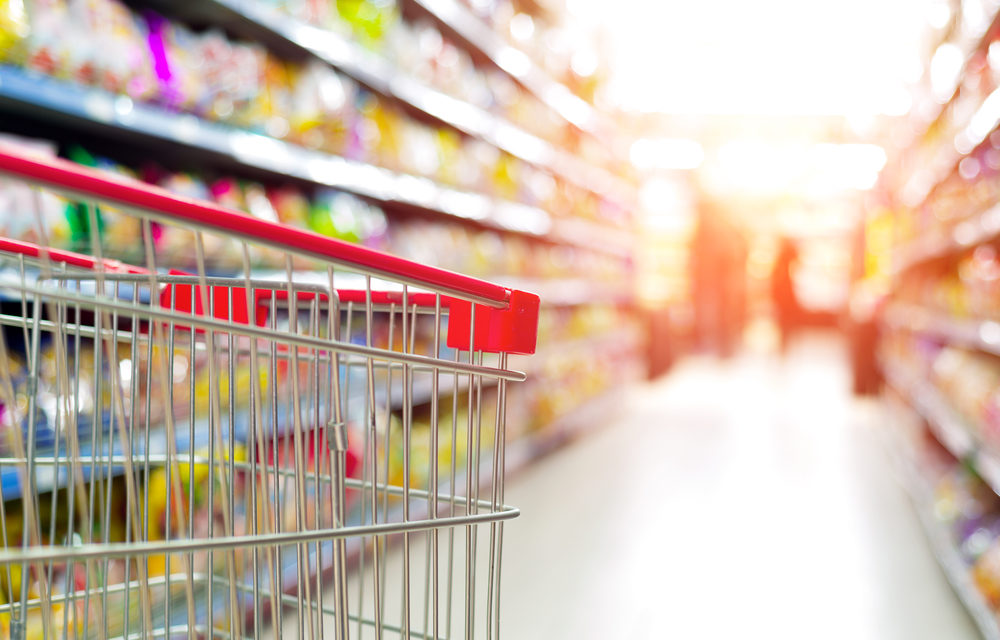Traditional supermarkets face squeeze
The US grocery market is in the midst of a shakeout, and the pressures are mounting on at least one key segment even as others thrive.
Traditional supermarkets face a difficult period. Their US store count could plunge 25% to a little over 19,000 in 2021 from nearly 25,400 in 2016, according to a “Future of Food Retailing” report published this month by market research firm Inmar Willard Bishop Analytics. Traditional grocers also will see their share of the market drop to 33.7% from 36.5% over the five-year period.
Conventional supermarkets have seen their ranks thinned already, with store count falling 5.8% last year and market share declining 2 percentage points, according to Inmar, which defined traditional supermarkets as those with at least $2 million in annual sales and typically carry anywhere from 15,000 to 60,000 items in their stores.

Those in the winning column, meanwhile, will be the likes of Aldi, Lidl and Trader Joe’s, or what Inmar characterized as “limited assortment” grocers that usually carry fewer than 2,000 items. They will see their share of the grocery market rise to 4.4% from 3.1% last year. Their combined store count also will jump 21% to nearly 5,000, according to Inmar.
Why Germany’s Lidl Is Likely to Win Share in the US
That’s not surprising considering Germany’s Lidl made its first foray in the US market in June and its German rival Aldi has disclosed an aggressive expansion plan, targeting 2,500 US locations by 2022.
A Nielsen study in June also found that these types of grocers, which Nielsen described as “deep discounters” with mostly private label merchandise that allows them to keep prices low, saw the biggest increase in consumer grocery shopping visits over the past year, outpacing other food retailers from conventional grocery stores to supercenters.
Another bright spot of the market is the “Fresh Format” stores like Sprouts Farmers Market or Whole Foods that differentiate from traditional grocers by emphasizing perishables and placing more ethnic, natural, and organic products in the center aisles of the stores, according to Inmar. The market research firm projects this segment of the market will see store count jumping 48% to nearly 2,300 by 2021 from 2016 with their share of the market nearly doubling to 2.8%. Traditional supermarkets like Lunds & Byerlys converting to fresh format also aided growth in fresh format, Inmar said.
Rodney McMullen, CEO of Kroger, the largest supermarket chain, said in June fresh areas of the store will play a key role in setting itself apart from rivals. “It’s important for us to continue to improve on those aspects because that’s what will be a point of difference,” he said.
While the snaps may be fleeting, Snapchat Geofilters are an extremely effective way to engage with your customers. Brands can create custom Geofilters that become accessible in specific locations, like in your business! Learn how the Yext Knowledge Engine can help with your location data.
Convenience Stores Ring Up Gains
Among non-traditional grocers, supercenters like Walmart, wholesale clubs like Costco as well as convenience stores, drug stores, and dollar stores all saw gains in both their share of the grocery and consumables market and their segment store counts last year, Inmar data showed. That’s partly because many of these stores are adding more fresh produce and ready-to-eat-and- cook meals to satisfy demands of consumers’ increasingly on-the-go lifestyle.
With Amazon being the big elephant in the room in pretty much every corner of the retail world these days, not to mention its Whole Foods purchase, it’s no surprise that the Inmar study projects online to be where the biggest grocery growth will be. By 2021, online sales of food and beverage will more than double to $70 billion from $33 billion last year. Ecommerce’s share of that market also will double to 8% of the US food and beverage sales from 4% last year, Inmar said.
According to a Nielsen and Food Marketing Institute study published earlier this year, more than 70% of consumers will engage with online food shopping within 10 years, up from 23% currently.
Online grocery shopping also is becoming a multigenerational thing: while millennials may have first jumped on the online bandwagon, a TrendSource study released in July found buying grocery online is no longer a millennial thing.
And Amazon isn’t the only retailer having its sights on the grocery ecommerce market. Traditional grocers including Kroger, Safeway, ShopRite all have their own online grocery business. Walmart, which last week reported its best US grocery comparable sales gain in five years, said demand has been driven partly by its expanded online grocery curbside pickup service.
“Grocery ecommerce is likely to surpass these optimistic figures as food retailers come online faster than other retail sectors have done in the past,” the Inmar report said.
by Andria Cheng

